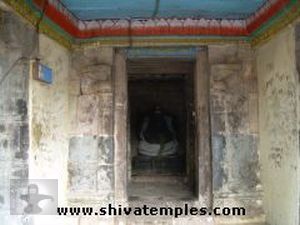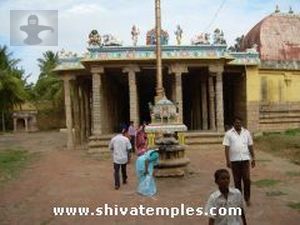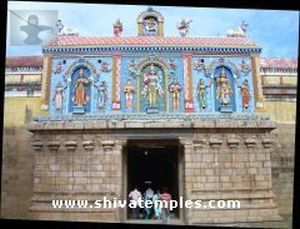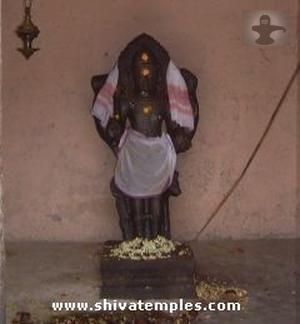Karpaganathar temple, TiruValanchuzhi
Location: TiruValanchuzhi
Deity known as: Karpaganathar
Female Deity: Periyanayaki
Pathikam: Tirunavukarasar 2, Sambandar - 3
Gallery - Karpaganathar Temple

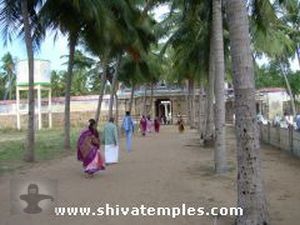
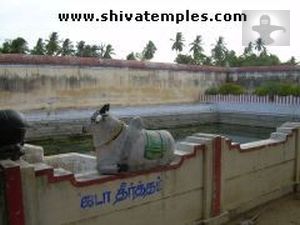
How to reach
This temple is located about 6 km from Kumbakonam, close to Swamimalai — one of the six sacred abodes of Lord Murugan. It lies just 1 km from Swamimalai and can also be reached via Dharasuram. The temple stands on the main road connecting Kumbakonam, Thanjavur, Papanasam, and the Sundaraperumal Temple, making it easily accessible by road and well-connected by regular bus services.
Temple Address
Tiruvalanchuzhi
Near Swamimalai
Kumbakonam Taluk
Thanjai District
PIN - 612302
Temple hours
Morning: 6:00 - 12:00
Evening: 4:00 - 8:00
Nearby Temples
| 1 | Pazhaiyarai - 4.4 kms | |
| 2 | Tiru-Kudamukku (Kumbakonam) - 7 kms |
Temple structue & Significance
The temple of Karpaganantheswarar (also known as Sadaimudinathar or Kabardeeswarar) and Periyanayaki in Tiruvalanchuzhi stands majestically with its towering five-tiered Rajagopuram that opens into the outer prakaram. A paved path shaded by coconut trees leads from the main entrance to the second gateway. Branching off this path are routes to the Jatamakuta Theertham and Bhairava Sannidhi, with a shrine for Jata Theertha Vinayakar overlooking the sacred tank.
Temple Structure
The second gateway is crowned with a vibrant panel of colorful sculptures and opens into the second enclosure of the temple — another prakaram that houses the kodimaram, Nandi, and balipeetam. Within this precinct lies the famous ‘Shwetha Vinayaka’ shrine. From here, a short walk through a beautifully pillared mandapam leads to the sanctum of the presiding deity. The main sanctum is encircled by a spacious prakaram, offering a serene ambiance enhanced by the gentle chirping of birds — a walk here feels truly rejuvenating. An interconnecting passage from this prakaram leads to the shrine of the divine consort, Goddess Periyanayaki, situated to the right of the main sanctum. Temples with this arrangement, where the goddess is positioned on the right, are venerated as ‘Tirumana Thalams’ — sacred abodes symbolizing divine unity.
Origin of the Temple's Name
The temple derives its name Tiruvalanchuzhi from the spot where the River Cauvery takes a rightward bend (valanchuzhi meaning "right turn"). According to legend, when Adisesha emerged at this curve, the force of his appearance created a deep pit called Pillathuvaaram.
The Sacrifice of Sage Herandam
When the Cauvery disappeared into this pit, the Chola king prayed for guidance. The Divine appeared and revealed that only the sacrifice of a sage could restore the river. The king approached Sage Herandam, who was performing penance at Kottaiyur amidst Erandam trees. Out of compassion for humanity, the sage descended into the pit and offered himself as a sacrifice. The river then re-emerged and flowed gracefully around the temple. A statue of Sage Erandam can be seen within the temple.
Legend of Adisesha
It is believed that on the night of Maha Shivaratri, Adisesha emerges at four junctions – Tiruvalanchuzhi, Thirunageshwaram, Thiruppampuram, and Nagaikaranam – to offer worship. This belief is preserved through oral tradition even today.
Swetha Vinayaka – The White Ganesha
The Divine Emergence of Swetha Vinayaka
The temple's presiding deity, Swetha Vinayakar (White Vinayaka), has a unique origin. During the churning of the cosmic ocean (Thiruppaarkadal), the Devas neglected to invoke Vinayaka before beginning their task. As a result, the deadly poison (halahala) emerged from the sea. Realizing their error, the Devas gathered the sea foam and shaped it into an image of Vinayaka, offering their prayers. Pleased by their devotion, Vinayaka granted them success, and the nectar was obtained.
Installation by Indra
Indra, recognizing the sanctity of this place, installed the sea-foam-formed Vinayaka here and built the shrine. He continues to worship Him on every Vinayaka Chaturthi, according to legend.
The Untouched Murti
The Swetha Vinayakar here is unique – He is not bathed with water (abhishekam). Instead, the idol, about 10 angulams high, receives offerings of panugu (sandal paste), and powdered green camphor is gently sprinkled over Him without physical contact. This has earned Him the name "The Untouched Murti." It is also believed that since the deity turned right while blessing devotees, the place itself became known as Tiruvalanchuzhi.
Swetha Vinayaka Mandapam
The hall that houses Swetha Vinayakar is said to have been built by Indra himself. It features elaborately painted pillars, beautifully sculpted ceilings, and black stone carvings of remarkable craftsmanship. The deity here is the temple's most venerated figure, earning Tiruvalanchuzhi the title "The White Vinayakar Temple."
Special Shrines and Features
Ashtabhuja Mahakali
The outer prakaram includes notable shrines for Ashtabhuja Mahakali, Bhairava, and Shani. The eight-armed Mahakali is regarded as the guardian deity of Raja Raja Chola, who prayed to her before his battles and remained undefeated through her blessings. The Bhairava murti, known for its fierce form, is slightly set back to reduce its intensity.
Ganga Visarjaneshwarar
A rare sculpture of Ganga Visarjaneshwarar, depicting Lord Shiva releasing River Ganga from His locks, is found along the circumambulatory path. This is one of the temple's most interesting idols.
Twenty-Two Lingams
It is said that Sage Durvasa once performed a grand yagna here. Twenty-two sages who attended the ritual installed their own lingams within the temple, which can still be seen today. These lingams are associated with various sages and hold special significance.
Sacred Theerthams and Tree
The temple's sacred waters include the Cauvery, Arasalaru, and Jatadheertham, while the Vilva tree serves as the temple's Sthala Vriksham (sacred tree).
Parivara Sthalam
Tiruvalanchuzhi is one of the Parivara Sthalams (associated temples) of Thiruvidaimarudur, dedicated to Vinayaka.
Notable Worshippers and Significance
Divine Worshippers
Among those believed to have worshiped here are Sage Erandam, Adisesha, Umaiyammai (Parvati), Indra, Thirumal (Vishnu), and Brahma. This establishes the temple's significance across the Hindu pantheon.
Thiruppugazh Significance
In the inner prakaram, Lord Murugan is depicted with six faces and twelve arms, seated on a peacock with his consorts beside him. This shrine is celebrated in Thiruppugazh, which praises Murugan's glory at Tiruvalanchuzhi. The deity is accompanied by Valli and Deivayanai, and stands near the Navagraha shrine.
More Gallery - Tiruvalanchuzhi Temple
